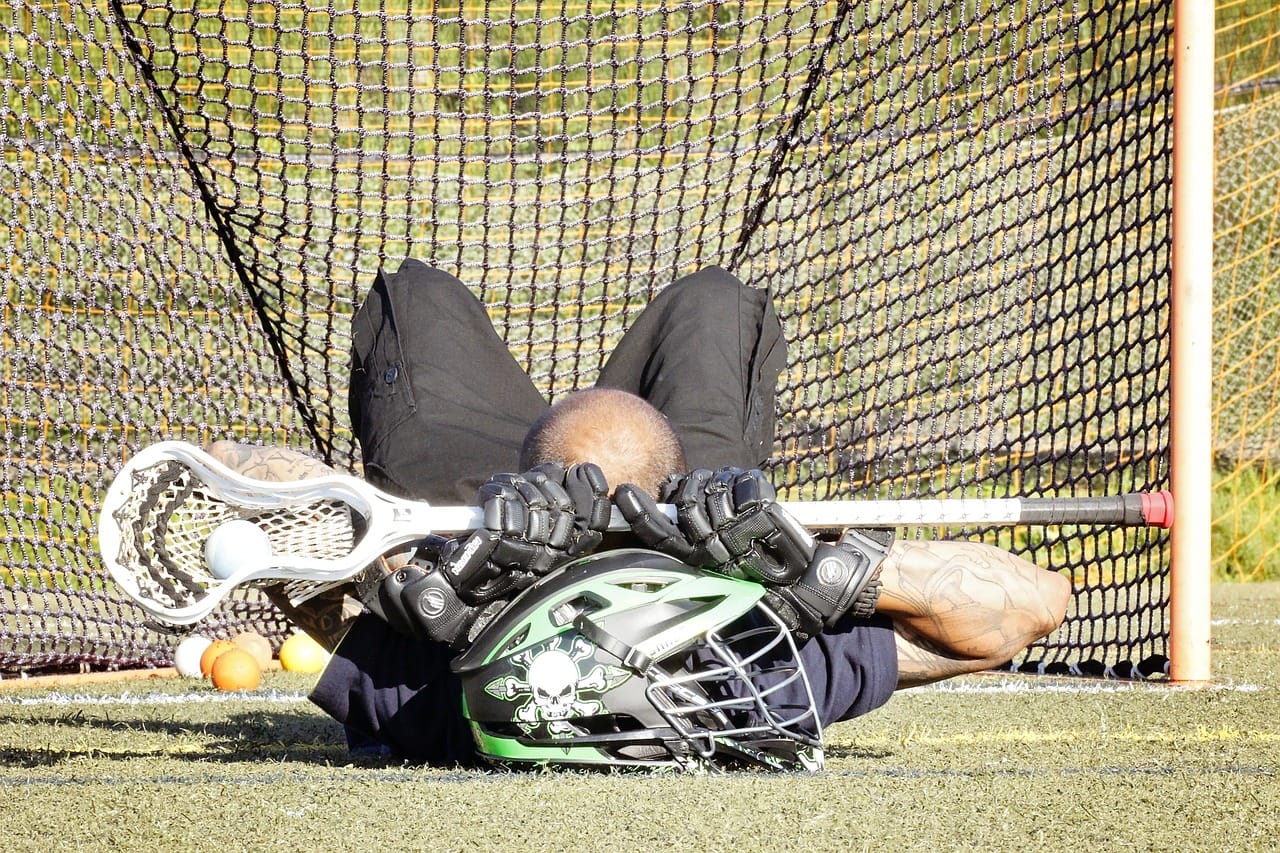Lacrosse is a dynamic and exhilarating sport that combines the agility of basketball, the speed of soccer, and the physicality of hockey. It's a game that captivates audiences with its fast pace and intricate play.
But what is lacrosse sport, exactly? In this comprehensive guide, we'll explore the ins and outs of lacrosse, from its origins to the modern game played across the globe.
The Origins of Lacrosse
Lacrosse's roots can be traced back to Native American tribes, where it was more than just a game. It was a spiritual ritual for young warriors to showcase their strength and valor.
The name lacrosse was coined by French settlers, inspired by the curved stick resembling a bishop's crosier. The Montreal Lacrosse Club was one of the first to establish the sport's presence in the 19th century, setting the stage for the modern lacrosse we know today.
The Lacrosse Stick: An Extension of the Player
Central to the game is the lacrosse stick, a unique piece of equipment with a long shaft topped by a loose net designed to catch, carry, and pass the small rubber ball.
The stick varies in length and style, with the goalkeeper's stick being wider to block shots. Offensive players use shorter sticks for better control, while defensive players may use long sticks to extend their reach.
The Lacrosse Ball: The Heart of the Game
The lacrosse ball is a solid rubber sphere that players maneuver across the field. Its small size and weight allow for high-speed travel when thrown, making the game's pace incredibly fast.
Gaining control of the lacrosse ball is crucial, as possession of the ball can quickly turn the tides of a match.
The Lacrosse Field: A Battleground for Athletes
A standard lacrosse field is divided into an offensive half and a defensive half, with goals at each end. The field's dimensions allow for ample space for players to run, pass the ball, and strategize their next move.
Field lacrosse is typically played outdoors, while box lacrosse is a variant played in an enclosed arena, often repurposed hockey rinks.

The Lacrosse Team: A Cohesive Unit
A lacrosse team consists of ten players: three attackmen, three midfielders, three defensemen, and a goalkeeper. Each position plays a vital role, from scoring goals to preventing the other team from doing so.
The midfielders, often considered the most versatile players, cover both the offensive and defensive aspects of the game.
The Game Played: A Symphony of Strategy and Skill
Lacrosse games are a spectacle of strategy and athleticism. Players must use their skills to pass the ball, dodge opponents, and shoot at the opponent's goal. The game is played in four quarters, with teams switching sides at halftime. The objective is simple: score more goals than the other team.
Major League Lacrosse: The Pinnacle of Professional Play
Major League Lacrosse (MLL) represents the highest level of professional lacrosse. Established in 2001, the MLL showcases the sport's top talent, with teams competing for the championship title each season.
The league has helped popularize lacrosse, bringing it to a broader audience and inspiring young athletes to play lacrosse.
International Lacrosse Federation: Uniting the Lacrosse World
The International Lacrosse Federation (ILF) was the governing body responsible for men's lacrosse internationally. In 2008, it merged with the Women's International Federation of Women's Lacrosse Associations to form the Federation of International Lacrosse, now known as World Lacrosse.
This organization oversees international competitions and works to grow the sport globally.
National Lacrosse Association: Fostering Growth at Home
The National Lacrosse Association (NLA) is a hypothetical organization that could be responsible for promoting and developing lacrosse within a specific country. It would work to establish leagues, support high schools and colleges with lacrosse programs, and ensure the sport's continued growth at the national level.

Box Lacrosse: A Faster, More Physical Variant
Box lacrosse is played indoors, usually on a hockey rink with turf laid down. The game is known for being faster and more physical than field lacrosse due to the enclosed space and boards.
Players wear protective gear to withstand the increased body contact, and the game is played with six players per side, including the goalkeeper.
Lacrosse Training and Conditioning: Essential for Peak Performance
Lacrosse players know that the key to success on the field is not just skill with a long stick or the ability to shoot toward the opponent's goal; it's also about being in top physical condition. Lacrosse training involves a mix of cardiovascular endurance, strength training, and agility drills.
Players often engage in high-intensity interval training (HIIT) to mimic the fast-paced nature of the game, ensuring they can sprint down the field as quickly in the last quarter as they did in the first game of the season.
Conditioning for lacrosse is unique compared to other sports. It requires a blend of the endurance of a soccer player, the agility of a basketball player, and the strength of a football player.
Lacrosse athletes wear protective pads and carry their sticks throughout the game, which adds to the physical demand. To handle the rigors of the sport, players focus on core strength to improve balance and power for shooting.
Plyometric exercises are also a staple in their training regimen to enhance explosive movements, crucial for dodging defenders and making quick directional changes.

Lacrosse Goalkeeping: The Last Line of Defense
In the realm of lacrosse, the goalkeeper plays a pivotal role, often referred to as the last line of defense. With a unique and larger goalkeeper's stick, these guardians of the net have the challenging task of preventing the lacrosse ball from breaching their domain.
Unlike field players, goalkeepers require a distinct skill set, combining agility, quick reflexes, and strategic thinking to anticipate the opponent's next move.
Their stick, an emblem of their duty, is designed to offer a wider catching area, ensuring they have the best chance to thwart an offensive player's attempt to score.
The goalkeeper's responsibilities extend beyond just blocking shots. They are the orchestrators of the defense, constantly communicating with their three defenders to organize and adapt to the ever-changing dynamics of the game.
In women's lacrosse, where the women's game emphasizes finesse and strategy, the goalkeeper's role is even more pronounced. They must be adept at reading the play, directing teammates, and stepping up as the ultimate obstacle between the offensive player and the opponent's goal.
Their performance can often be the deciding factor in the outcome of a match, making their position one of the most crucial on the field.
Lacrosse Equipment Evolution: From Handcrafted to High-Tech
Lacrosse has come a long way from its handcrafted origins, and nowhere is this more evident than in the evolution of its equipment. The modern player is outfitted with gear that's the result of extensive research and innovation.
For instance, the goalkeeper's stick, once a simple wooden tool, has transformed into a technological marvel, designed to enhance reach and control. These sticks are now lighter, stronger, and tailored to help the goalie defend the opponent's goal with more efficiency.
In addition to the goalkeeper's gear, the rest of the lacrosse equipment has seen significant advancements. Helmets are now equipped with cutting-edge materials to absorb impact, while cleats are designed for optimal agility and speed.
The women's game, in particular, has seen a surge in specialized equipment, with the Women's Lacrosse Association advocating for gear that meets the unique needs of female athletes.
This focus on equipment evolution ensures that players at all levels can perform at their best, with safety and performance going hand in hand.

Lacrosse Drills: Sharpening Skills for the Women's Game
Lacrosse drills are essential for players looking to refine their skills, especially in the women's game where agility and precision are paramount. These drills often focus on cradling, dodging, and quick passes, which are crucial for maintaining possession and advancing toward the opponent's goal.
For instance, the 'give-and-go' drill emphasizes teamwork and timing, allowing players to practice rapid exchanges in tight spaces, a skill that can be the difference between a good and a great player in the women's lacrosse association.
Moreover, defensive drills are just as vital, teaching players how to effectively check without committing fouls and how to position themselves to intercept passes.
Drills like 'ground ball pickups' are designed to improve reaction time and hand-eye coordination, ensuring that players can regain control of the ball under pressure.
These exercises not only enhance individual performance but also contribute to the overall strategic execution of the women's game, making each practice session a step toward mastery.
Goalkeeping Techniques: Mastering the Goalkeeper's Stick
The goalkeeper's stick is a unique tool in lacrosse, and mastering its use is an art form. It's longer than the sticks used by field players and has a larger head, which provides a wider range of defense against shots aimed at the goal.
Goalkeepers must have exceptional reflexes and hand-eye coordination to deflect or catch the ball, often in a split second. Drills that simulate game situations, such as rapid-fire shots from various angles, help goalkeepers anticipate and react to the unpredictable nature of an opponent's goal attempt.
In addition to physical skills, a good goalkeeper must also possess a sharp mental game. They are the last line of defense and often the first to initiate a counterattack. Understanding the nuances of angles and positioning can make a difference in tight matches.
For example, practicing 'arc movements' helps goalkeepers learn the most effective ways to cover the goal area, reducing the chances of the ball finding its way into the net.
As the women's lacrosse association continues to grow, the role of specialized goalkeeper training becomes increasingly important in elevating the level of the women's game.

The Art of Scoring in Lacrosse: Strategies and Skills
Scoring in lacrosse is an art form that requires a blend of individual skill and team strategy. To outmaneuver the defense and find the back of the opponent's goal, players must master a variety of techniques.
From deceptive dodges to precision shooting, the offensive players are always looking for ways to gain an edge. The women's game, in particular, emphasizes finesse and quick ball movement, showcasing the agility and coordination of the players.
But it's not just about individual prowess; team plays are crucial in setting up scoring opportunities. Coordinated movements and passes can dismantle even the tightest defenses, creating openings for a well-placed shot.
The Women's Lacrosse Association highlights the importance of teamwork in the women's game, where strategic plays often lead to spectacular goals.
Whether it's a fast break or a meticulously planned set piece, the thrill of scoring in lacrosse is a testament to the sport's dynamic nature.
The Shot Clock: A Race Against Time
The introduction of the shot clock in lacrosse has revolutionized the pace of the game, ensuring continuous action and preventing teams from stalling. This ticking countdown applies pressure on the offensive player to make a move towards the opponent's goal before time runs out.
The shot clock varies in duration between different leagues, but its presence is a universal signal that the player carries not just the ball but also the urgency of the moment. It's a race against time, compelling teams to strategize quickly and execute their plays with precision.
In women's lacrosse, the shot clock adds an extra layer of excitement to the women's game, as it encourages faster play and more frequent scoring opportunities. The offensive player must be keenly aware of the dwindling seconds, working in concert with teammates to create a scoring chance before the buzzer.
This element of the game tests the mental and physical agility of the players, as they must maintain a high level of play under the constant pressure of the shot clock. It's a thrilling aspect that keeps players and spectators alike on the edge of their seats, as each possession could turn the tide of the game.

The Cultural Significance of Lacrosse: More Than Just a Game
Lacrosse holds a deep cultural significance that dates back to its origins with Native Americans, who played lacrosse not just as a sport but as a spiritual practice. Tribal warriors used the game to resolve conflicts, heal the sick, and develop strong, agile warriors.
It was more than a competition; it was a ceremonial event that could last for days, with teams consisting of hundreds of men. The game was a microcosm of life's challenges and victories, a sacred tradition that has been passed down through generations.
William George Beers, a Canadian dentist, is often credited with formalizing the first game of lacrosse in 1867, transforming it from its tribal roots into a modern sport.
He established rules, standardized the equipment, and reduced the number of players, making it more accessible and structured. Despite these changes, the spirit of the game remains.
Today, the Women's Lacrosse Association and other organizations continue to honor the sport's heritage while promoting its growth. The cultural legacy of lacrosse is a testament to its enduring appeal and the respect it commands as a sport deeply rooted in history and tradition.
Women's Lacrosse Association: Celebrating the Women's Game
The Women's Lacrosse Association is dedicated to promoting and supporting women's lacrosse. The women's game differs slightly from the men's, with twelve players on the field and less physical contact allowed.
Despite these differences, women's lacrosse is just as competitive and thrilling as the men's version.

Dedicated Lacrosse Communities: The Sport's Lifeline
Across the world, dedicated lacrosse communities keep the sport thriving. From local clubs to collegiate teams, these communities foster a love for the game and provide opportunities for players of all ages to participate.
They are the backbone of lacrosse, ensuring its traditions and spirit continue to be passed down through generations.
The Role of Protective Equipment
To play lacrosse safely, players must wear protective equipment. This includes helmets with face masks for men, mouth guards, shoulder pads, elbow pads, and gloves.
The goalkeeper wears additional padding due to the high velocity of shots faced. This gear helps prevent injuries during fast-paced and sometimes physical play.
Understanding Personal Fouls in Lacrosse
Personal fouls in lacrosse include slashing, tripping, illegal body-checking, and cross-checking. These infractions can result in penalties that give the opposing team a man-up advantage. Players must adhere to the rules to maintain a fair and safe game environment.
The Importance of the Face Off
The face-off is a critical moment in lacrosse, occurring at the start of each quarter and after each goal. Two players crouch down at the midfield line, their sticks horizontal on the ground, and compete to gain control of the ball. Winning the face-off can give a team a significant advantage in possession and momentum.

Lacrosse: A Sport for All Ages
Lacrosse is played by people of all ages, from young children to adults. It's a sport that teaches teamwork, coordination, and discipline. High schools and colleges often have lacrosse teams, and there are many recreational leagues for those who wish to continue playing beyond their school years.
The Evolution of Modern Lacrosse
Modern lacrosse has evolved significantly from its origins. Innovations in equipment, rule changes, and the establishment of professional leagues have shaped the game into what it is today. Despite these changes, the sport remains true to its core principles of skill, speed, and sportsmanship.
The Fastest Sport on Two Feet
Lacrosse is often referred to as the "fastest sport on two feet" due to its high tempo and quick transitions. Players must be in excellent physical condition to keep up with the game's demands, making it an exciting sport to both play and watch.
Lacrosse in Pop Culture and Media
Lacrosse has made its way into pop culture and media, with movies, books, and TV shows featuring the sport. This exposure has helped raise awareness and interest in lacrosse, introducing it to new audiences and potential players.
The Future of Lacrosse: Growth and Expansion
The future of lacrosse looks bright, with the sport gaining popularity worldwide. Efforts by organizations like World Lacrosse aim to include lacrosse in the Olympic Games, which would be a significant milestone for the sport's growth and recognition.

Some Final Thoughts
Lacrosse is a thrilling team sport that combines speed, skill, and strategy. With its origins in Native American culture, the game has evolved into a popular sport played by men and women of all ages.
Major organizations like Major League Lacrosse and the International Lacrosse Federation govern the sport, ensuring its continued development and popularity. Whether played on a field or in a box arena, lacrosse offers a unique and captivating experience for players and fans alike.
FAQ's
How many players are on a lacrosse team?
A lacrosse team typically has ten players on the field, including three attackmen, three midfielders, three defensemen, and a goalkeeper.
What equipment is needed to play lacrosse?
Players need a lacrosse stick, a lacrosse ball, and protective gear, which includes a helmet with a face mask, mouth guard, shoulder pads, elbow pads, and gloves. Goalkeepers wear additional protective equipment.
How is lacrosse played?
Lacrosse is played by two teams, each trying to score goals by shooting a small rubber ball into the opponent's goal using a lacrosse stick. The game is played in four quarters, and the team with the most goals at the end wins.













Member discussion